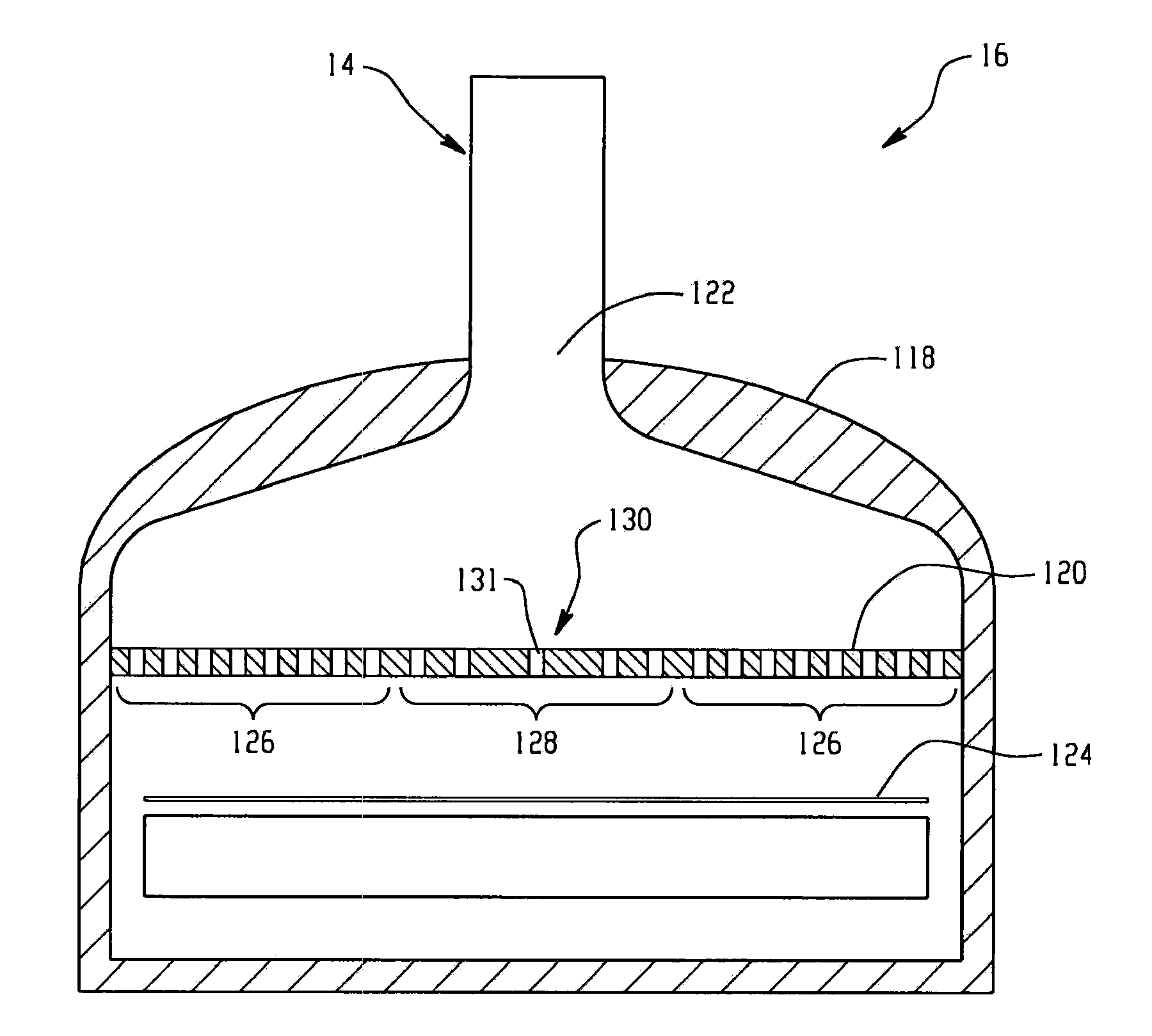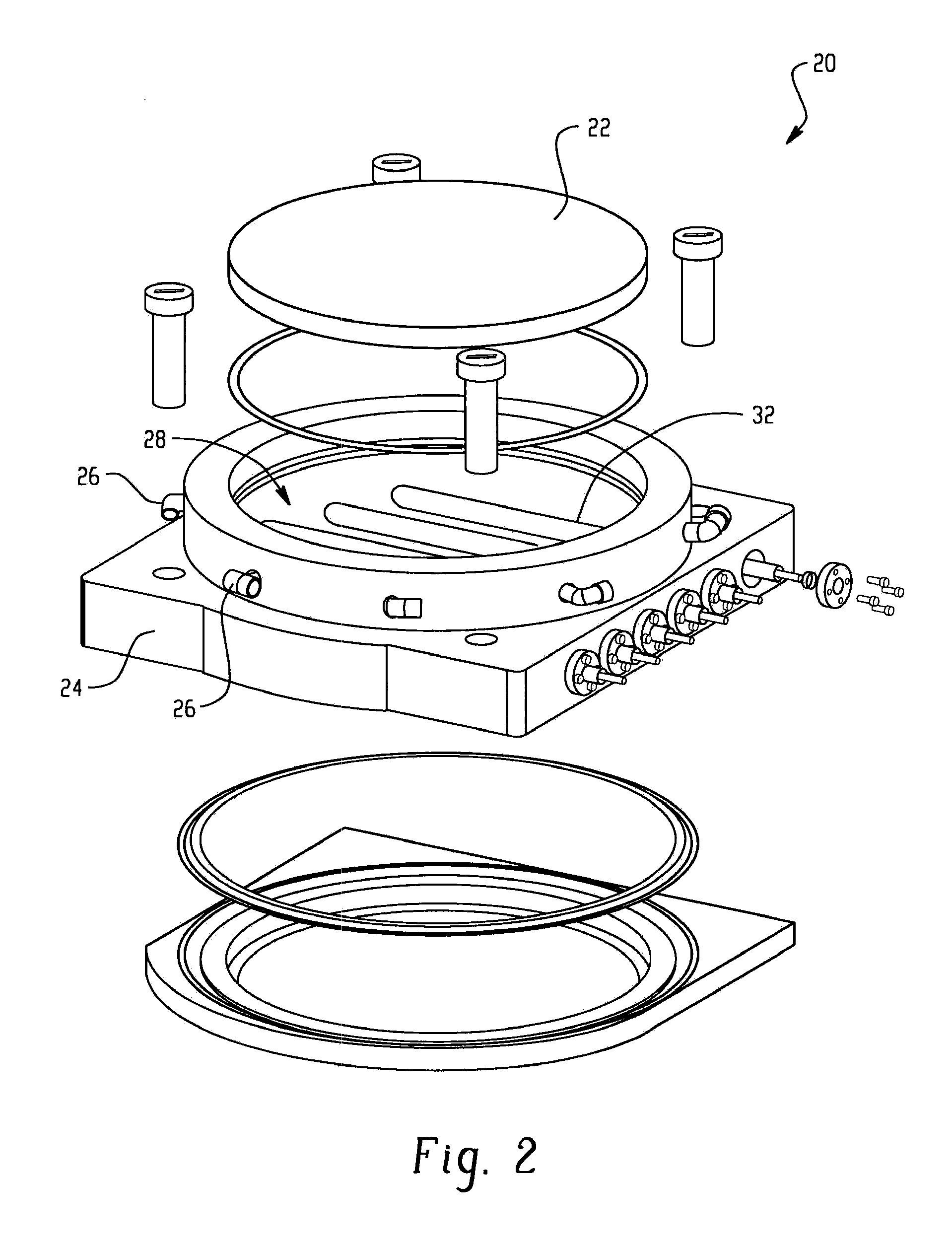Substantially Non-Oxidizing Plasma Treatment Devices and Processes
a plasma treatment device and plasma technology, applied in the field of substantial non-oxidizing plasma mediated processes and plasma treatment devices, can solve the problems of degrading transistor performance, increasing device leakage, and increasing leakage, and achieve the effect of inhibiting the formation of copper hydrid
- Summary
- Abstract
- Description
- Claims
- Application Information
AI Technical Summary
Benefits of technology
Problems solved by technology
Method used
Image
Examples
example 1
[0068]In this example, bare silicon wafers were exposed to plasma generated from forming gas in a RapidStrip320 plasma ashing tool commercially available from Axcelis Technologies, Inc., Beverly, Mass. Different processing chamber configurations of different materials were employed. Copper metal contamination levels of the bare silicon wafers was determined after plasma processing by vapor phase decomposition with inductively coupled plasma mass spectrometer analysis (VDP ICP-MS). The plasma chemistry was formed by flowing forming gas (5% Hydrogen in Nitrogen) at 7 standard liters per minute (slm) into the plasma ashing tool at a pressure of 1 Torr, a wafer temperature of 275° C., and a power setting of 3500 Watts.
[0069]FIG. 8 graphically illustrates the results for both the absolute copper amount (atms / cm2) and the relative copper amount (detected copper atoms / total atoms of 11 probed metals in %). The process chamber configured with a chuck formed of an aluminum alloy demonstrated...
example 2
[0070]In this example, a substrate having a TiN coating deposited thereon was exposed to plasmas formed from a gas mixture containing varying amounts of oxygen and NH3 and a gas mixture that contained varying amounts of oxygen and a 5% by volume hydrogen gas / helium gas mixture without any nitrogen present in the mixture. The results are shown in FIGS. 9 and 10.
[0071]FIG. 9 graphically illustrates the amount of oxidation of a TiN material exposed to a plasma gas mixture of NH3 and O2 for 3 minutes, with chuck temperature at 240° C. For O2 concentrations of <about 25%, the results showed that TiN oxidation is ≦0.1 nm for the exposure conditions. Thus, these results demonstrate the plasma was substantially non-oxidizing when the TiN material was exposed to plasma generated from a gas mixture containing less than 25% by volume.
[0072]FIG. 10 graphically illustrates the amount of TiN loss as a result of oxidation as a function of the amount of oxygen contained in the mixture of O2 and the...
PUM
| Property | Measurement | Unit |
|---|---|---|
| Temperature | aaaaa | aaaaa |
| Temperature | aaaaa | aaaaa |
| Temperature | aaaaa | aaaaa |
Abstract
Description
Claims
Application Information
 Login to View More
Login to View More - R&D
- Intellectual Property
- Life Sciences
- Materials
- Tech Scout
- Unparalleled Data Quality
- Higher Quality Content
- 60% Fewer Hallucinations
Browse by: Latest US Patents, China's latest patents, Technical Efficacy Thesaurus, Application Domain, Technology Topic, Popular Technical Reports.
© 2025 PatSnap. All rights reserved.Legal|Privacy policy|Modern Slavery Act Transparency Statement|Sitemap|About US| Contact US: help@patsnap.com



